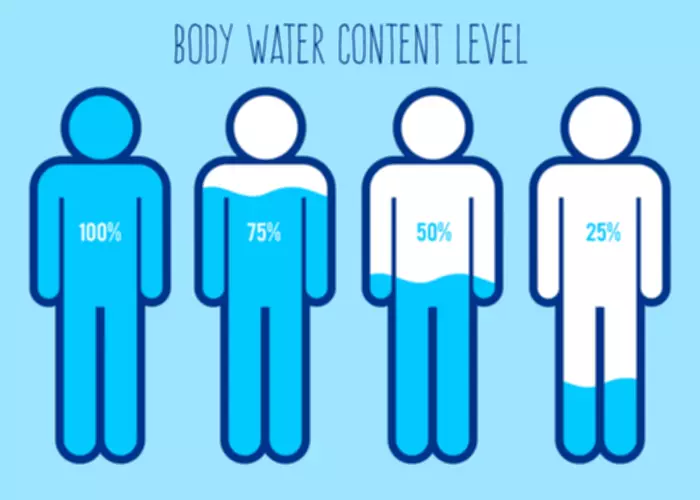
Your prognosis will be impacted by the severity of your alcohol use and whether or not you have liver disease. Prolonged used of alcohol can result in cirrhosis, or permanent scarring of the liver. Cirrhosis of the liver can cause exhaustion, leg swelling, and nausea. All chronic alcohol misusers attending the ED should receive intravenous B vitamins as recommended by The Royal College of Physicians.23 Strenuous efforts must be made to exclude concomitant pathology. With timely and aggressive intervention, the prognosis for a patient with AKA is good.
Patient Education

This activity illustrates the evaluation and treatment of alcoholic ketoacidosis and explains the role of the interprofessional team in managing patients with this condition. Alcoholic ketoacidosis is a metabolic condition resulting from excessive alcohol consumption. Binge drinking affects the body in complicated ways and can prohibit organs from performing their necessary functions. Alcoholic ketoacidosis can be painful, dangerous and even fatal, often requiring a visit to an emergency room or intensive care unit for recovery. It’s vital to understand what this condition is, how it occurs and how it’s treated. Understanding alcoholic ketoacidosis can help you recognize and prevent it.
- He created the ‘Critically Ill Airway’ course and teaches on numerous courses around the world.
- Alcoholic ketoacidosis causes nausea, vomiting, and abdominal pain.
- Without insulin injections, they’re likely to end up in a state of ketoacidosis.
- Both Wrenn et al6 and Fulop and Hoberman5 found evidence of alcoholic hepatitis to be common, with frequent elevations in serum transaminase activities and bilirubin.
- Neurologically, patients are often agitated but may occasionally present lethargic on examination.
Addiction Treatment Programs

All remaining papers were retrieved and the reference lists hand searched for any additional information sources. He is actively involved in in using translational simulation to improve patient care and the design of processes and systems at Alfred Health. He coordinates the Alfred ICU’s education and simulation programmes and runs the unit’s education website, INTENSIVE. He created https://ecosoberhouse.com/ the ‘Critically Ill Airway’ course and teaches on numerous courses around the world. He is one of the founders of the FOAM movement (Free Open-Access Medical education) and is co-creator of litfl.com, the RAGE podcast, the Resuscitology course, and the SMACC conference. This goal can usually be achieved through the administration of dextrose and saline solutions (see Treatment).
Alcoholic ketoacidosis: review of current practice and association of treatments to improvement
When your liver uses up its stored glucose and you aren’t eating anything to provide more, your blood sugar levels will drop. The clinical and biochemical features of AKA are summarised in boxes 1 and 2. The classical presentation is of an alcoholic patient with abdominal pain and intractable vomiting following a significant period of increased alcohol intake and starvation.
What are the symptoms of alcoholic ketoacidosis?

Emergency clinician knowledge of the evaluation and management of AKA is essential in caring for these patients. This narrative review evaluates the pathogenesis, diagnosis, and management of AKA for emergency clinicians. The majority of papers detected by this search focus primarily on diabetes mellitus and its complications, and were excluded. General literature reviews, single case reports, and letters were also excluded.
What Are the Symptoms of Alcoholic Ketoacidosis?
Jenkins et al2 suggested that alcohol induced mitochondrial damage might account for AKA. Alcohol produces structural changes in human liver mitochondria within alcoholic ketoacidosis days. Fulop and Hoberman5 argued that a functional abnormality is more likely to be responsible, as even severe AKA usually improves rapidly with treatment.
Symptoms of Alcoholic Ketoacidosis
- If the vomiting and starvation go on for a day or more, the liver’s normal stores of sugar (glucose) decrease.
- If a patient has a concurrent illness or condition along with ketoacidosis, the next steps may need to be different.
- All remaining papers were retrieved and the reference lists hand searched for any additional information sources.
- If you or someone else has symptoms of alcoholic ketoacidosis, seek emergency medical help.
An altered level of consciousness should prompt consideration of alternative diagnoses such as hypoglycaemia, seizures, sepsis, thiamine deficiency, or head injury. Arterial blood gas and biochemistry studies reveal a raised anion gap metabolic acidosis without evidence of lactic or diabetic ketoacidosis. Patients improved rapidly (within 12 hours) with intravenous glucose and large amounts of intravenous saline, usually without insulin (although small amounts of bicarbonate were sometimes used). Often, blood alcohol levels are no longer elevated when patients present with alcoholic ketoacidosis. Alcoholic ketoacidosis is a metabolic complication of alcohol use and starvation characterized by hyperketonemia and anion gap metabolic acidosis without significant hyperglycemia. Alcoholic ketoacidosis causes nausea, vomiting, and abdominal pain.
The decreased insulin-to-glucagon ratio that occurs in starvation indirectly reduces the inhibition on CAT activity, thereby allowing more free fatty acids to undergo oxidation and ketone body formation. During starvation, there is a decrease in insulin secretion and an increase in the production of counter-regulatory hormones such as glucagon, catecholamines, cortisol, and growth hormone. Hormone-sensitive lipase is normally inhibited by insulin, and, when insulin levels fall, lipolysis is up-regulated, causing release of free fatty acids from peripheral adipose tissue. Patients who appear significantly ill and those with positive ketones should have arterial blood gas and serum lactate measurements. If you have symptoms of alcoholic ketoacidosis, your doctor will perform a physical examination. They will also ask about your health history and alcohol consumption.

Excessive drinking can lead to frightening conditions like ketoacidosis. The risk of developing this condition is one of the reasons an alcohol use disorder is dangerous. Though alcoholic ketoacidosis can be reversible, it’s best to prevent it by limiting alcohol intake and never consuming alcohol on an empty stomach.
Your cells need insulin to use the glucose in your blood for energy. If they can’t use glucose because there’s not enough insulin, your body switches to another method to get energy — breaking down fat cells. These conditions have to be ruled out before a medical professional can diagnose you with alcoholic ketoacidosis. People who drink large quantities of alcohol may not eat regularly. Not eating enough or vomiting can lead to periods of starvation.